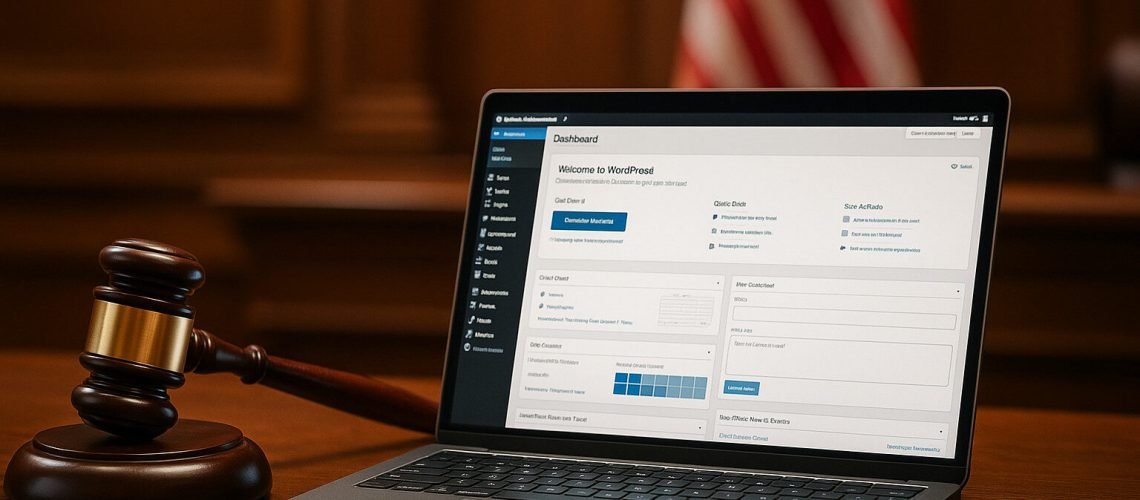Many WordPress site owners believe that merely adding a link to an accessibility statement or installing an overlay toolbar fulfills their legal obligations under the Americans with Disabilities Act. That belief could not be farther from the truth.
The end of 2024 saw a seven percent increase in ADA Title Three complaints filed in federal court, reaching a total of eight thousand eight hundred cases according to AudioEye’s year-end summary. Of those complaints, 2,452 alleged inaccessible website content, demonstrating that courts and plaintiffs focus on real barriers rather than cosmetic fixes ADA Title III. This article explores why superficial measures leave site owners exposed and outlines what true compliance demands.
The rising wave of accessibility lawsuits
Between 2021 and 2023 federal filings under ADA Title Three first dipped from 6,304 to 4,081 in 2023. Despite this temporary slowdown, the total number of filings climbed back to 8.800 by the end of 2024, as Seyfarth Shaw statistics confirm.
In the first quarter of 2024 courts received 1,136 digital accessibility suits in state and federal venues. These figures illustrate a persistent enforcement climate in which plaintiffs target ecommerce, healthcare, and service websites. California alone accounted for 3,452 filings, while New York followed with 2,220, indicating that no sector or region is safe.
Key legal understandings of title III
Title Three of the ADA requires places of public accommodation to provide equal access to people with disabilities. Although the ADA does not explicitly reference a technical standard for websites, the Department of Justice and numerous courts have adopted the Web Content Accessibility Guidelines (WCAG) version 2.1 at level AA as the de facto benchmark.
These guidelines cover text alternatives for non-text content, keyboard operability for all functionality, and sufficient contrast between foreground and background elements. In practice, meeting level AA means ensuring that every image includes meaningful alternative text, that users can navigate menus and forms without a mouse, and that visual presentation supports those with low vision. The DOJ’s own summary of WCAG guidelines is available at https://www.ada.gov/wcag21summary.html.
The inadequacy of statements and overlays
An accessibility statement may communicate intent but it confers no tangible benefit to users until technical barriers are removed. Courts have rebuffed statements as a defense when they fail to match the site’s actual functionality. Overlay plugins that promise one-click compliance suffer from similar flaws because they cannot remedy issues such as missing form labels or unstructured content. Many overlays simply inject temporary fixes that break whenever the site’s templates or plugins update. In the absence of fundamental code changes, screen-reader users continue to encounter inaccessible elements, and keyboard-only users remain blocked from critical interactions.
Financial and reputational consequences
The average settlement in an ADA website accessibility suit ranges from $ 5,000 to $25,000 plus legal fees. A single case can erode profit margins and divert resources from core business initiatives. Repeat or high-profile defendants face much larger judgments that run into six figures.
Beyond direct legal costs, organizations suffer reputational harm when news of their noncompliance spreads. Prospective customers with disabilities often share negative experiences via social media, compounding the impact. Federal agencies subject to Section 508 of the Rehabilitation Act incur additional scrutiny and potential penalties when they fail to serve citizens with disabilities.
Path to meaningful compliance
Achieving genuine ADA compliance requires a holistic approach that blends automated testing, manual review, and ongoing governance. Leading accessibility professionals begin with a comprehensive audit using tools such as axe and Lighthouse. These automated scanners reveal common barriers, while manual testing with screen readers like NVDA and VoiceOver uncovers issues that scripts cannot detect.
Remediation then focuses on adding descriptive image text, establishing a logical content structure, and verifying keyboard navigation across interactive elements. Organizations must publish an accessibility statement that links to an up-to-date audit report rather than a static PDF. Finally, quarterly reviews ensure that new content or plugin updates do not reintroduce compliance gaps.
Conclusion
As ADA litigation rates continue their upward trajectory, WordPress site owners cannot rely on superficial measures or one-click solutions. True compliance demands a sustained commitment to accessible design and technical remediation. By embracing WCAG 2.1 level AA as the guiding framework and embedding accessibility into development and content processes, organizations protect themselves from legal risk, expand their audience, and deliver equitable experiences for all users.



